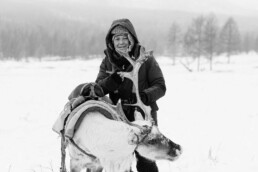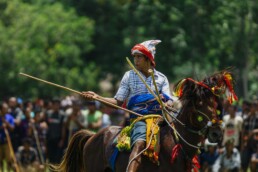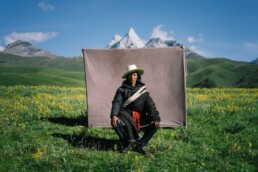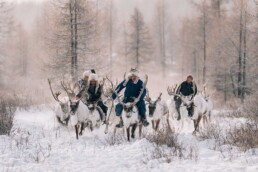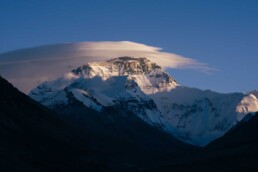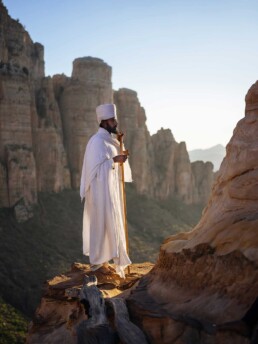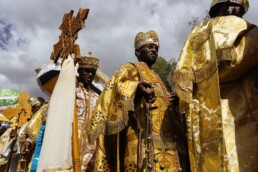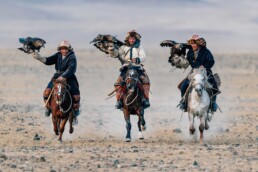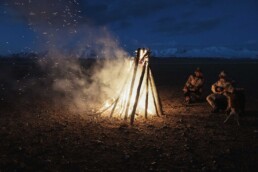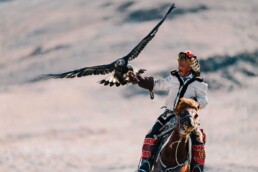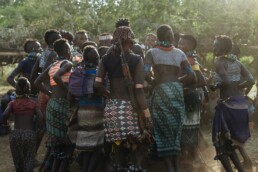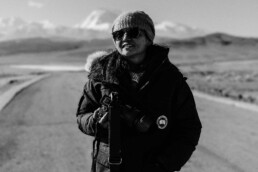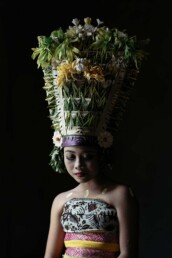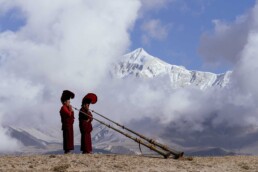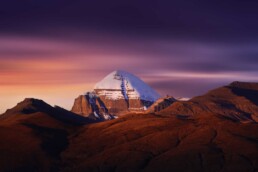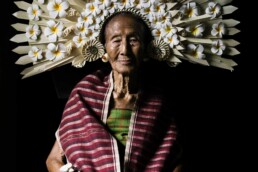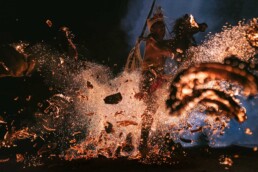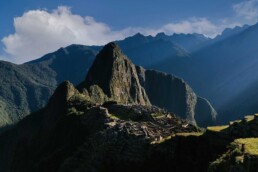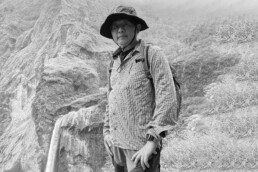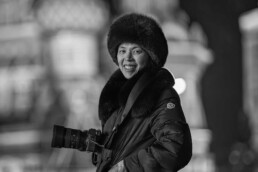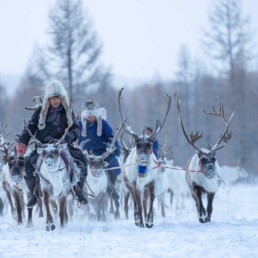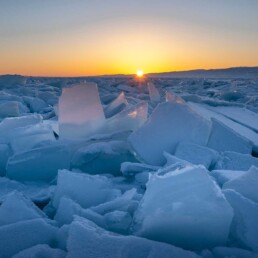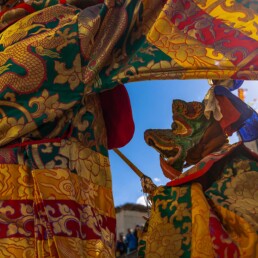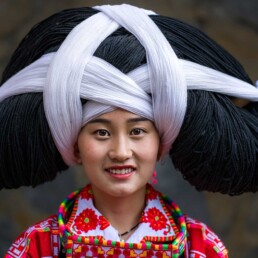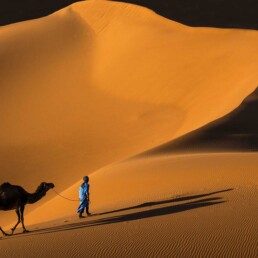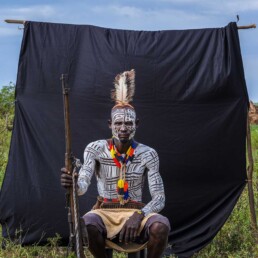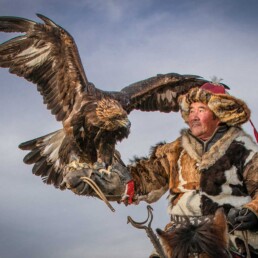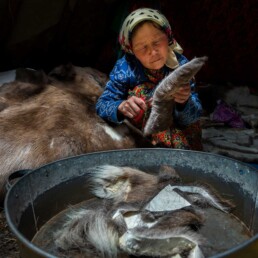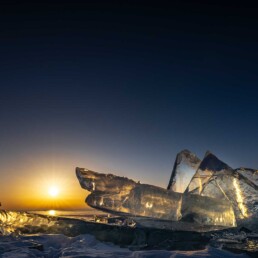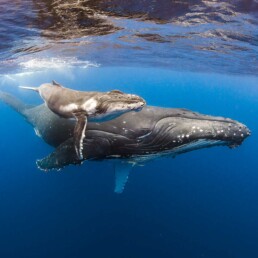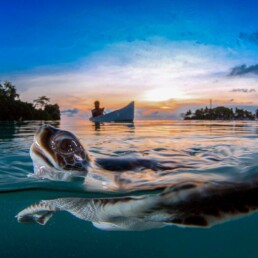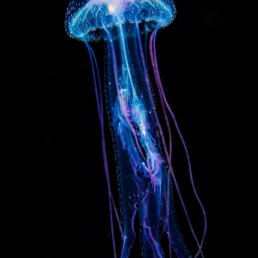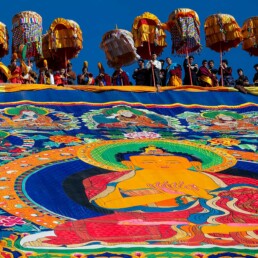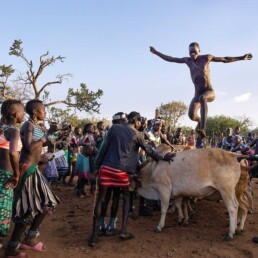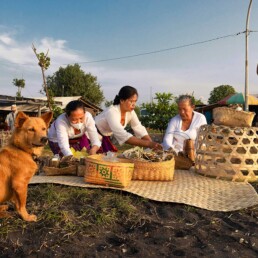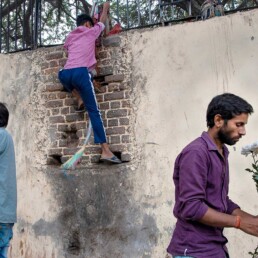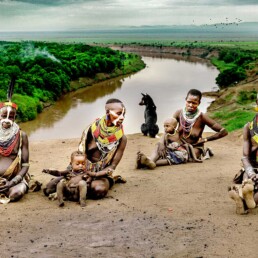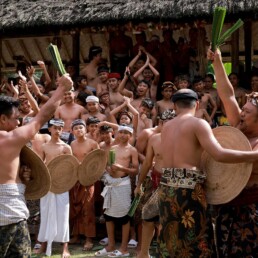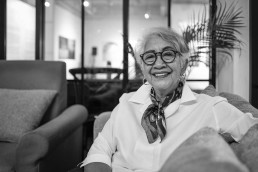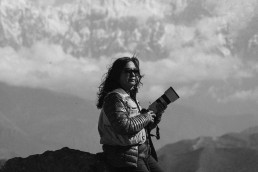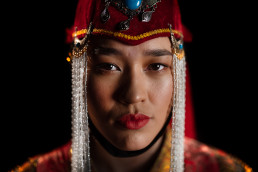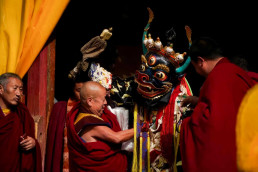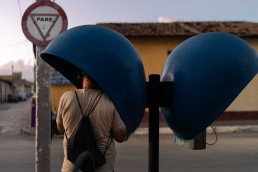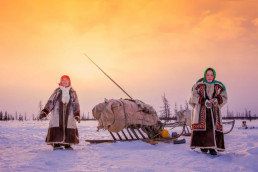Capturing Life’s Moments One Frame at a Time with Adi Pranoto
Photography is an art form that captures moments in time and allows us to revisit them over and over. Some people like it as a hobby, while others consider it a way of life. In this interview, we speak with a company owner, Adi Pranoto, who has become an avid photographer, and his path through photography is as inspiring as the photographs he creates. From street photography on business trips to exploring cultural landscapes and human connections, his tale is one of curiosity, enthusiasm, and the pursuit of significant experiences.
Who are you, and how did your passion in photography start?
I am the owner of Cobra Dental, a distributor of dental goods and tools. My passion in photography arose from numerous excursions to suppliers in many cities and nations. I typically chronicled these visits using street photography. Now that I have entrusted the business to my children, I have more time to dedicate to my passion.
What was your most memorable trip with Mahacaraka®, and why?
Each journey with Mahacaraka has been memorable. These visits have been extremely rewarding for me because of the experiences I’ve received and the wonderful images I’ve taken.
What is your favourite photo from a Mahacaraka® tour and why?
My fave photograph is of Pasola. Prior to joining Mahacaraka, I attempted to photograph Pasola under the supervision of Romo Efrem (†), who is well-known in the community. Despite his assistance, I could not acquire a good shot. However, with Mahacaraka’s supervision, I was able to acquire several stunning images, including portraiture, street shots, documentary, panning, and action shots.
Have you ever considered turning photography into a business, such as selling your work or becoming a professional photographer? Why ?
For the time being, I am pleased with my hobbies. I prefer to avoid the complexity of professionalism, such as learning sophisticated procedures, using equipment, post-processing, and managing data.
Who or what inspires you in photography?
My grandmother. During my school years, I lived with her in the village and learnt life philosophies and principles that I still cherish. Her ideas on social interaction, religious life, and balance influence how I capture life with my lens.
Which photographic genre are you interested in researching further, and why?
I’m getting ready to try bird photography because I have a few possibilities coming up. I’ve already purchased the necessary equipment, including a sufficient focal length lens.
Have you ever considered turning photography into a business, such as selling your work or becoming a professional photographer? Why ?
For the time being, I am pleased with my hobbies. I prefer to avoid the complexity of professionalism, such as learning sophisticated procedures, using equipment, post-processing, and managing data.
What is your favourite photography genre? What attracts you to it?
I don’t have a certain genre yet, but human interest photography is especially appealing and hard. It frequently necessitates rapid decisions to capture the proper moment.
Who or what inspires you in photography?
My grandmother (†). During my school years, I lived with her in the village and learnt life philosophies and principles that I still cherish. Her ideas on social interaction, religious life, and balance influence how I capture life with my lens.
How do you retain physical stamina and endurance for trip photography, especially given your age?
Reflexes and physical strength suffer as people get older. I carefully choose destinations that are suitable for my physical ability. Regular exercise, adequate relaxation, a balanced diet, and keeping cheerful are essential for preserving my fitness.
If you could only use one lens, which would it be and why?
I’d go with a 35mm lens because it allows for proper framing without distortion.
What is your dream destination, and why?
I have numerous dream destinations: Nias for its fascinating culture, Wakatobi and Derawan for their natural beauty, Badui Dalam for its distinct community life, Bali for its rich culture, and Timika for its festivals. Internationally, I would like to visit Pakistan, Iran, Mexico, and Antarctica.
Could you explain your photographic style?
Relaxed and quite spontaneous.
What do you appreciate best about photography, and why?
I adore documenting events or objects that reflect my life experiences. It’s a means to compare them to current realities.
What is the most difficult challenge you’ve faced in photography, and how did you overcome it?
The most difficult challenge has been the physical strain of transporting equipment and travelling to remote sites. I typically employ porters or use vehicles to get as near to the place as possible.
How do you interact with your subjects, especially when photographing them?
I start with a pleasant gesture, such as holding the camera at chest level while smiling. If they appear amenable, I engage in light chat before shooting the shot. If they express discomfort, I respect their boundaries and do not proceed.
Are there any other creative forms that inspire your photography? If so, which ones?
No, I haven’t found any other art forms to inspire my photography.
Through this interview, it is clear that photography from Adi Pranoto’s perspective is more than just capturing photographs; it is also about weaving tales, connecting with people, and cherishing life’s precious moments. His experience demonstrates the power of passion and perspective. Whether discovering cultural diversity, indulging in nature, or recalling cherished memories, photography remains a meaningful and gratifying activity. It’s a gentle reminder that the beauty of life is frequently found in the small aspects that we take time to enjoy.
Metha Meiryna: No Perfect Picture, Only Perfect Adventures
Metha Meiryna is not your typical mother and working professional. As Project Director at a national construction company with projects scattered across multiple cities in Indonesia, she juggles a demanding career while raising her child and pursuing her passion for photography. In this interview, Metha generously shares her journey into photography, how she balances her bustling life, and her thoughts on preserving cultural authenticity through the lens.
Thank you for taking the time to chat with us today. To start off, could you tell us a little about yourself and how you first became interested in photography?
Of course! I’m a mother to one beautiful daughter and currently work as a project director for a national construction company. My role requires overseeing several projects across various cities in Indonesia, so it keeps me quite busy. But my passion for photography actually stems from my love for hiking and being surrounded by nature. It all started when I set a personal goal of completing the Seven Summits of Indonesia. As some background, I’ve climbed six of the seven peaks,with Carstensz Pyramid in Papua remaining on my list.
During my hiking expeditions, I became captivated by the beauty of nature and wanted to document the incredible landscapes I encountered. That’s when I first grew interested in photography. Curious about how to hone this newfound interest, I reached out to friends, and they directed me to Sandy Wijaya, who would later become a mentor to me in the world of photography. I started taking private photography lessons from him in 2017, and that’s when my interest in photography truly deepened.
In 2018, I had the chance to join Sandy on Mahacaraka photography tour to Nepal and China (Guizhou), and that experience was incredibly eye-opening. Since I love to travel, travel photography became not just exciting but also challenging, especially in terms of managing my time between work, family, and photography. But despite the challenges, the rewards have been amazing. My passion for both travel and photography continues to grow, with each journey offering new perspectives to capture.
With such a hectic schedule, how do you manage to balance your time between family, work, and your love for traveling and photography?
It’s definitely a balancing act! I wouldn’t say it’s easy, and sometimes it feels like I’m constantly juggling all aspects of my life. But I truly love traveling, so I make an effort to squeeze in tours whenever I can, even with a packed schedule. Fortunately, I can work remotely for certain parts of my job, which gives me a bit more flexibility to travel. However, regardless of how well I plan, focusing too much on one aspect—whether it’s family, work, or travel—means that something inevitably gets sacrificed.
For instance, I often travel without my child because she has her own commitments, such as school and extracurricular activities, which makes it hard to coordinate tours together. But on top of all of this, I’ve also been pursuing my Master’s degree, which adds another layer of complexity. Many times during my tours, I find myself needing to attend online classes, participate in meetings, or complete assignments, all while still trying to enjoy the traveling experience. I’m really grateful that I was able to complete my degree despite those challenges.
There was even a moment during a recent tour to Monlam in 2024 when I had to cut my travels short and come home early for an important exam. It’s definitely not easy striking a perfect balance, but with the passion I have for all these parts of my life, I just try to make it work the best I can.
Is there any particular travel destination that has left a lasting impression on you?
Every place holds its own impression for me, but fundamentally, I genuinely enjoy going on expeditions, whether within Indonesia or abroad. One of the places that stands out is Mongolia; I felt almost like coming home because of the warmth of the local team there. There was also the challenge of photographing in the Taiga with temperatures dropping to -50 degrees Celsius, which was extremely demanding and made for a difficult yet fulfilling experience.
Then, there’s Peru, with its captivating locations, culture, and atmosphere. It’s a destination where you can both shop and take amazing photographs at the same time—truly unique in its own right.
From all these places, I’ve come to realize that we must be grateful for the incredible richness of Indonesia. The food here is exceptional, and we have an abundance of clean water—something we often take for granted, but which is not always easily accessible in other destinations.
That sounds incredible. On that note, what would you say has been your greatest achievement in photography so far?
I’d have to say winning the Sony World Photography Award in 2022 with my piece, Rejang Dancer. Seeing my photo showcased in London was definitely a proud moment. But beyond formal recognition, what I consider an even greater achievement is my ability to let go of external validation. I’ve learned not to focus so much on whether people like or dislike my work. What matters is that I love what I do, and I’m content with the images I capture.
Between work and family, how do you find inspiration for your photography?
Honestly, I rarely pick up my camera during my daily routine because work takes up so much of my time. When I’m not traveling, the camera often stays stored away. Photography requires focus, and I believe good photography must come from the heart. For me, that means capturing something when I’m truly present and passionate about what’s in front of me.
If you could only choose one lens to work with, what would it be?
Right now, I’m really drawn to prime lenses because of the clarity and creative control they offer. I mainly switch between a 35mm and a 50mm lens, depending on the type of shot I’m aiming for. However, if I absolutely had to pick just one, I would choose the 50mm.
The 50mm lens is incredibly versatile—it strikes a perfect balance between close-up details and more expansive views, without distorting the image. It also mimics the natural field of vision, which helps capture scenes the way I perceive them through the lens. Whether it’s portraits or street photography, the 50mm delivers sharp and beautifully framed compositions that align with how I interpret the world around me. And because I really enjoy working with the 50mm, I love how it offers a unique point of view compared to other lenses.
Do you have any advice for people out there who struggle to balance their hobbies, careers, and family life?
Every individual has different priorities, and that will naturally lead to different ways of balancing things. But my main advice is to remember to be happy above all. Without happiness, managing life’s many responsibilities becomes a draining task. Make sure that in the midst of everything, you’re doing what makes you feel fulfilled.
Are there any specific photography projects you’re either working on or planning for the future?
I do have a dream I’d really like to pursue, although finding the time is a challenge. Still, my friends are incredibly supportive of the idea, and I hope I can make it happen. My dream is to create a photography book and perhaps hold an exhibition featuring my works. It’s a big goal, but one I hope to accomplish one day.
What was your most unforgettable travel experience, and how did it influence your photography?
Every journey leaves its own unique mark on me, but if I had to choose one, it would be the tour to Taiga. The extreme conditions there were unlike anything I’d ever encountered. We put our full trust in our driver to get us safely to such a remote place. The weather was so cold that my equipment didn’t function as well as I’d hoped, so I had to learn to make the best of what I had. Travel photography is often less about capturing the perfect shot and more about the total experience—the people you’re with, the environment, and how it all influences your mood. Interestingly, it’s not just the photos themselves but the memories attached to them that matter the most to me.
Every journey holds its own significance. In the past, I used to think that I could travel at any time, but now I believe in the mantra “Now or Never.” My journeys have taken on more meaning because I’ve witnessed so many changes, and, sadly, much has been lost, especially in the realm of culture, due to modernization. That’s why I feel an urgency to travel. I’m particularly drawn to destinations that are hard to reach, exotic, and inhabited by tribes that are on the verge of disappearing because I’m afraid I won’t get another chance to witness such cultures. At the very least, my photos can serve as an artifact for future generations to see what once existed.
Sometimes, the most memorable experiences aren’t because I captured great photos, but because of the journey itself–the friends I travel with, the environment, and how it all influences my mood to create something meaningful. Often, the magic lies in the experience, not just the photography.
In the end, after visiting so many places around the world, I feel incredibly grateful to live in Indonesia, with its comfortable weather, temperature, food, and environment. There’s nothing quite like the feeling of home.
Do you believe photographers have a particular responsibility when it comes to documenting culture?
Absolutely. I believe photographers should aim to showcase cultures, especially those that are on the verge of extinction, in a respectful and meaningful way. It’s not just about exploring and capturing interesting images; it’s about preserving what you’re documenting. You should approach it with the intent to respect and honor the tradition you’re showcasing, not just exploit it for the sake of a pretty picture.
Lastly, what would you like to accomplish as a photographer in the future?
To be honest, I wouldn’t even call myself a professional photographer; I see myself more as someone who has a deep love for photography. I’m not particularly skilled when it comes to technical aspects, but I would love for my photos to become meaningful on a larger scale. I want to achieve something noteworthy, something where I can look back and feel that the time I invested in photography was well-spent and impactful.
As our conversation draws to a close, it’s clear that Metha Meiryna’s approach to balancing her career, passion, and personal life is rooted in her love for what she does. Whether it’s climbing a mountain with a camera in hand or managing complex construction projects, her ability to stay grounded has led her not only to recognition but also personal fulfillment. As she continues to explore the world and sharpen her lens on her passions, Metha remains a living testament that following what you love while staying true to your priorities leads to a rich and rewarding life.
Herman Bunawan: The Artistic Journey of a Food Enterpreneur
Herman Bunawan, a self-made entrepreneur in the food sector, has long been fascinated with photography. Herman, known for his love of landscapes and ability to tell tales via photography, discusses how his travels and personal experiences have moulded his distinct approach to image capture. In this talk, we discuss his passion for photography, the places that inspire him, the problems he faces as a hobbyist, and his take on the craft.
Could you tell us a little something about yourself? How did you first get interested in photography?
I’m a food sector businessman that spends my days focussing on marketing, production, and finance. My interest in photography grew out of my career and significant travel. Initially, I wanted to capture the locations I visited, but it eventually turned into a love. That’s when I realised I wanted to capture more than just moments with my camera.
Speaking of travel, do you have a dream destination that you would like to photograph? Why that particular location?
Patagonia is clearly at the top of my list. The spectacular scenery and unspoiled wildlife make this a destination where every corner tells a different story. For me, photography is inextricably linked to nature, and the untouched beauty of Patagonia would be a fantastic experience to record via the lens.
What about your previous travels? Do you have a favourite photo from one of your visits with Mahacaraka, a photography tour group that you joined?
Mexico and Cuba are my favourite destinations. The warm-hearted residents, together with the vibrant cultural scene, truly distinguish the region. As a photographer, I am drawn to the historical charm and vibrant colours of such cities. I enjoyed photographing street scenes there; the people and places exude a sense of enthusiasm and warmth.
Do you have any photographers who have influenced your work or fuelled your development?
Yes, the late Andi Wijaya’s lectures served as the foundation for my photography—his early instruction affected how I approached both technique and perspective. Aside from that, I also learn a lot from discussing ideas with other photographers on tours, which helps me improve my own talents.
You’ve mentioned a strong preference for particular genres. What is your favourite photography genre, and what brought you to it?
I am particularly drawn to landscape photography. Because travel is such an important part of my life, I enjoy capturing the beauty of the world around me—whether it’s quiet mountains, wide deserts, or distinctive horizons. The need to capture the grandeur of nature keeps me interested in landscape photography.
What or who influences your photographic process? Do you have a consistent source of creative motivation?
Inspiration can come from anywhere, including photographers, nature, and art, as well as regular life situations. After reading books on street photography, I was particularly drawn to the works of Henri Cartier-Bresson. His ability to weave stories through candid photographs of daily events amazes me. Aside from that, I get inspiration from traveling—each new location provides a fresh canvas for me to work with.
As a hobbyist photographer, what challenges do you frequently meet, and how do you overcome them?
Age has been a physical problem for me, especially when working with big equipment. I’ve learnt to be picky about the equipment I bring while travelling or embarking on a photography adventure. Choosing lightweight but efficient gear has helped me manage this. It’s all about being realistic while still achieving the effects I want.
Gear selection is obviously crucial to you. What lens would you use if you could only shoot with one?
I’ve recently become pretty comfortable with a 35mm lens. I enjoy its size and how well it resembles the human eye’s range of view. It forces me to be creative within constraints while also allows me to capture vistas and street scenes efficiently.
What recommendations would you provide to someone who is just getting started with hobbyist photography?
Mastering your equipment is key. Cameras today have so many technological functions, and knowing how to use them properly may radically improve the quality of your images. The more comfortable you are with your equipment, the more you can concentrate on composition and storytelling via your photographs.
Are you more spontaneous when shooting, or do you plan out every detail ahead of time?
I am more of a planner. I prefer to observe and process everything before capturing an image. Understanding and preparing for the scene—whether it’s lighting or composition—gives me the creative freedom I require. That’s when I feel like I’m capturing the most accurate version of what I see.
Do you feel that each photograph you take has a narrative or purpose behind it? How do you communicate this through your work?
Absolutely. Every photograph I take contains a message or feeling that I wish to express. I want anyone who looks at my images to have a sense of the atmosphere of the location or time. That is critical to me—photography is about creating feelings and sharing a journey with people through images.
In an image-rich environment, do you have a responsibility to portray a true or sensitive narrative through your photography?
Yes. I take great care to respect the people or events that I capture, particularly during cultural or ceremonial occasions. It’s vital to me that I don’t break the environment or make people uncomfortable. I want my presence—and my camera—to be a good aspect of the scene, not an intrusion.
Have there been times when a snapshot didn’t turn out as you had hoped? How do you deal with this, and how has it affected your development?
Definitely. In this digital age, it is far easier to correct mistakes than it was when we worked with film. Each missed shot is an opportunity to learn something new. Receiving input from peers and mentors has greatly aided my improvement. I’ve learnt that failure isn’t the inverse of success; it’s just part of the process.
Finally, as a dedicated photographer, how do you plan to include storytelling into your future work?
I try to incorporate stories or messages into each photograph I take, but it’s not always simple. Frequently, I find myself limited to a single photograph, and it might be difficult to represent everything I want in just one shot. In the future, I intend to focus more on projects that allow me to tell greater stories through a series of photographs. I’m also seeking for a mentor who can help me create more meaningful photo tales.
As our chat concludes, it becomes evident that Herman Bunawan’s photographic journey extends beyond the technical components of the trade. His work is about recording memories, cultures, and personal experiences with passion and a compelling story. Throughout his business career, he discovered a second passion in photography, which allows him to blend his love of nature, travel, and human tales, making an indelible impression on anybody who sees his work.
Sofi Aida Sugiharto: Her Immersive Journey From The Land into The Ocean
Beneath the waves and far from the conventional realm of terrestrial photography, Sofi Aida Sugiharto has carved a niche that melds artistry with exploration. Her journey into underwater photography began with a simple desire to capture her children’s moments, but it evolved into a profound exploration of the submerged world. From her first dive in 2004 to her current pursuits across diverse genres like landscape and drone photography, Sofi’s lens has continually sought to reveal the unseen. Her work not only reflects her technical skill but also her deep connection with the world’s most remote and enigmatic places.
How did your interest in underwater photography begin?
My passion for photography started with capturing moments of my children. Back then, I was using a film camera, and later I transitioned to a digital camera with a 2-megapixel resolution. It wasn’t until 2004, when I began diving with my husband, that I discovered an entirely different world beneath the water’s surface. I felt an overwhelming urge to share what I saw underwater, and photography became the most straightforward medium for me to visualize these experiences. In 2006, I decided to pursue the PADI Underwater Photography Specialty. By 2013, my interests had expanded to include landscape, nature, and drone photography, and I’ve continued to explore these fields ever since.
How do you balance your life and photography?
I ensure that I manage my time well, dedicating time to my family, hobbies, and work. In this digital age, it’s much easier to maintain this balance because many tasks can be completed online, allowing me to stay connected and productive without sacrificing personal time.
What are your favorite genres of photography?
Underwater photography, unique tribes, and cultural photography are my top favorites.
What future destinations are you looking forward to exploring next?
Antarctica is at the top of my list. I’m eager to witness penguins and polar bears in their natural habitats.
Can you share a memorable experience with Mahacaraka? Why?
One of my most unforgettable trips with Mahacaraka was in Siberia, Russia. The extreme terrain and weather, with temperatures dropping to minus 51 degrees Celsius, made it a challenging experience. However, the sunrise views were breathtaking. I lived with the Nenets tribe, observing their daily activities and even participating in their migration. It was a once-in-a-lifetime experience.
Are there any photographers or artists who have influenced your style of photography?
I don’t have a specific name in mind, but whenever I see something I like, it often becomes my next destination or serves as a reference for my work.
What is the most underrated and overrated destination you have visited so far? Why?
China is the most underrated destination, in my opinion. Contrary to the negative testimonials I had heard, I found the country much cleaner and more organized than expected after several visits. On the other hand, I feel the U.S. is somewhat overrated. Despite being a large and modern country, it has its challenges, particularly with crime.
What are some of the most challenging and rewarding aspects of capturing underwater environments?
One of the most challenging yet rewarding experiences was photographing a blue whale in Sri Lanka. We were freediving, so we had to jump from the boat quickly as it approached the whale. We had to dive deep and fast to capture the whale before it disappeared into the depths, which is the opposite of the relaxed technique we usually learn in freediving. Additionally, other boats were around us, and unlike in diving, there was no buoy to mark the divers below, making it a more intense experience.
What are some of the proudest achievements you’ve accomplished in photography so far?
My photographs have been widely published in many Indonesian diving books and local diving magazines, with one even gracing the cover of a Russian underwater magazine. I’ve also had the opportunity to share my experiences as a speaker at various underwater photography and diving events, such as ADEX in Singapore, MIDE in Malaysia, and some photography communities in America. Moreover, I’ve received several awards, including the Adam Malik Memorial Award at the SFI 40th, Photographic Society of America (PSA), and Fédération Internationale de l’Art Photographique (FIAP) of France.
Sofi Aida Sugiharto’s photographic journey is a testament to the power of passion and perseverance. From the icy expanses of Siberia to the depths of the ocean, her work transcends mere documentation, offering a window into worlds often untouched by the average observer. As she looks toward future adventures in Antarctica, Sofi’s story continues to inspire and captivate, reminding us of the boundless beauty that lies just beyond the horizon and the transformative impact of capturing these moments through the art of photography.
Jahja Teguh Widjaja: Capturing Life Through the Eyes of a Pulmonologist
In the heart of Bandung, a seasoned pulmonologist, Jahja Teguh Widjaja spends his days treating patients and educating future doctors at Maranatha Christian University. Yet, beyond his medical expertise lies a profound passion for photography, particularly in the genres of documentary and street photography. This interview explores the fascinating journey of a man who has found a way to balance a demanding career with an equally demanding hobby, capturing the essence of life through his lens.
Can you tell us a short story about your journey as a pulmonologist and how you developed an interest in photography, particularly documentary and street photography?
I have been practising as a pulmonologist at Immanuel Hospital, Bandung for 25 years. Additionally, I am a full-time lecturer in Respiratory Diseases at the Faculty of Medicine, Maranatha Christian University, Bandung. My journey into photography began in 2013 when I attended the Salon Foto Indonesia exhibition in Bandung, organised by PAF Bandung. On a whim, I decided to visit the exhibition and met some PAF members who invited me to participate in a photography competition. At that time, I had just bought a camera and didn’t know how to use it properly, so I used the auto setting and gave it a try. Surprisingly, I won the first runner-up award. This success motivated me to take photography more seriously. I joined PAF Bandung and frequently attended photography workshops in Bandung and even Jakarta.
From the beginning, whenever someone asked me what subjects I preferred to photograph, I always answered people. At that time, I had no understanding of photography genres. Over the years, I have experimented with various genres, but I have always gravitated towards photographing people. My passion eventually narrowed down to Documentary, Culture, and Street Photography.
How do you balance the demands of your medical profession with your passion for photography?
I do not compartmentalise my life. When I am working as a doctor, I fully dedicate myself to serving and helping my patients. As a lecturer, I focus entirely on imparting knowledge to my students. When I am out photographing, I do it earnestly and wholeheartedly to capture the best images I can. The key is to embrace everything wholeheartedly and joyfully.
What sparked your interest in photography, particularly in the genres of documentary and street photography?
Photography allows me to create works that express my response to the world around me. My interest in photographing people likely stems from my daily interactions with people in my medical practice. Documenting human activities in a spontaneous and candid manner through documentary and street photography has become a style that I thoroughly enjoy and resonate with.
Are there any photographers or artists who have influenced your style and approach to documentary and street photography?
In Indonesia, I admire Erik Prasetya and his concept of “Estetika Banal.” I also appreciate Beawiharta’s journalistic documentary approach and have learned a lot from Agung Prameswara about creating photo stories. Internationally, I enjoy the spontaneity of Saul Leiter and Daidō Moriyama, the neatness of Matt Stuart’s street photos, and the street documentary styles of Robert Frank, Fred Herzog, and Joel Meyerowitz. Alex Webb’s complex, multi-layered dramas, Fan Ho’s classic style, Lee Jeffries’ street portraits, and the social documentaries of Sebastiao Salgado and Abbas are also significant influences. For travel documentaries, I admire Michael Yamashita and Steve McCurry. I don’t just know their names but also collect their photo books.
What inspired you to create the best-selling photo book “PANDEMIC”? Can you share some insights into the process of documenting the pandemic situation at your hospital?
During the Covid pandemic, I was responsible for leading the covid team at Immanuel Hospital, Bandung. I decided to document the efforts of the medical staff as they battled to care for covid patients. As a doctor involved in treating these patients, I took photographs of my colleagues while still performing my duties. Technically, it was challenging, as I had to wear full protection while taking the photos. Over time, I accumulated a substantial collection of photos, which led to the idea of creating a photo book, eventually published as “PANDEMIC.”
Do you have any upcoming photography projects or exhibitions that you are excited about? Can you give us a glimpse into what’s next for you?
I am planning to create a second series of the book titled “PANDEMIC: A MEMOIR.” This book will not only feature photographs but also include short notes from medical staff and patients about their experiences during the pandemic.
Can you share a memorable experience or story from your photography adventures?
Every experience and moment in my photography journey is precious and memorable.
You’ve joined several Mahacaraka adventures. What makes Mahacaraka unique for you?
There are several aspects that make me frequently join Mahacaraka trips. Firstly, Mahacaraka’s photography trips are meticulously designed, prepared, and executed. Secondly, their destinations are often unique. Thirdly, their concept aligns perfectly with my interest in People Photography, capturing cultural rituals, festivals, human interest, street scenes, and portraits.
Can you describe a particular experience or trip with Mahacaraka that has had a profound impact on your photography?
On Mahacaraka trips, I have learned a great deal about photography, from basic techniques to advanced skills and, most recently, creating photo stories. These experiences have significantly benefited my photographic development.
What advice would you give to other professionals who have a passion for photography but struggle to find time for it?
Everyone has the same amount of time; the difference lies in how we use it. If we have a genuine passion for photography, we should allocate time to learn and develop our photography skills.
In the heart of every professional lies a passion that often goes unnoticed amidst the hustle of daily responsibilities. This interview encapsulates the essence of balancing a demanding career with a fervent hobby, showing that with dedication and joy, it is possible to excel in both. As our interviewee continues to capture the world through his lens, his story serves as an inspiration for all who seek to blend their professional and personal passions seamlessly.
Hermandari's Journey Aging Gracefully With Cameras
Hermandari Kartowisastro, an inspirational woman in Indonesian photography, defies ageing stereotypes by following her vocation with unwavering zeal. At an age when many people opt to slow down, Hermandari began on an incredible trip, capturing the world’s beauty through her lens. Her tale is one of resilience, ingenuity, and an insatiable desire to explore.
What inspires you to travel and capture the world through your lens, especially at a time when many people slow down with age?
“I’ve enjoyed travelling since I was young. After my children finished school, I had the time to pursue my passion for travelling to exotic countries. Initially, I felt that something was lacking from my visits; images of these places hardly reflected their beauty. This realisation set off my career into photography. The advent of the digital era made it much easier to observe rapid results, which fueled my desire even more. At the age of 68, I participated in a two-week photography course. In 2023, I improved my talents by learning drone photography, which has added a new dimension to my work and allowed me to shoot magnificent aerial views. Photography has offered me great joy during my senior years.”
Are there any photographers or artists who have influenced your style or approach to photography?
“Henky Kuntjoro, I met him on a liveaboard diving trip in 2008 and was taken by his underwater and on-land photography, particularly his black-and-white compositions. Michael Kenna, a world-renowned B&W landscape photographer, has significantly influenced me with his lighting and austere compositions. These two photographers had a significant impact on my approach. While I experiment with numerous genres, I am most drawn to landscapes, simplicity, and minimalism. Portrait photography under Sandy Wijaya’s tutelage, as well as my natural affinity for art, particularly abstract and minimalist painting, impacted my style. I adore painters like Jeihan Sukmantoro, A.D. Pirous, and Umi Dahlan, whose works grace my home.”
Were there any challenges you faced in learning a new creative skill at a later stage in life, and how did you overcome them?
“Initially, learning photography was not difficult; it simply took practice and memorising procedures. However, in recent years, memory lapses have become a challenge. To prevent this, I take notes, edit my images on a regular basis, and play mentally demanding games like Sudoku and word puzzles.”
Do you have any exciting photography projects or adventures planned for the future? Why are they so exciting?
“I have various travel and photography ambitions that I aim to carry out. It’s always exciting to see new locations, learn about different cultures, and meet new people. This year, I’m particularly looking forward to going to Namibia for its spectacular vistas and deserts, chasing the aurora borealis in North Norway, exploring Kyrgyzstan, and visiting Oman.”
How do you curate the themes and locations for your photography tours to ensure a unique and impactful experience?
“Researching and reading about potential destinations is essential. With the abundance of information available nowadays, it is simple to identify intriguing sites. I look for appealing images of these areas, calculate the best times to travel, and pick what equipment to carry.
Was there a particular destination or moment during your Mahacaraka trip that stood out for you as a photographer?
“Yes, Lo Manthang, or Mustang, in northern Nepal, was very remarkable. The journey was thrilling, with a sense of danger. We had to prepare for fewer facilities while being healthy at high altitudes. After a nerve-racking flight from Pokhara to Jomsom, which came near to a crash two days later, we chose to travel overland. The three-day Tiji Festival was a highlight, providing rich experiences and captivating moments.”
Looking back at your incredible career, which photography project has been the most rewarding for you and why?
“My participation in the 16th ArtJog in 2023 was extremely fulfilling. I was happy to be chosen, and even more thrilled when one of my images from a Mahacaraka trip to Mexico in 2022 sold. La Catrina’s portrait, which was shown and sold, retains a particular place in my heart. ArtJog is a famous exhibition, and it was an honour to be picked as one of the few photographers, particularly as a woman.”
What advice would you give to aspiring travel photographers who want to join photography tours, especially at a later stage in life?
“First and foremost, maintain good health and a positive spirit. Exercise regularly and live a healthy lifestyle. Positivity is key, especially when travelling to exotic or underprivileged countries. Embrace the local culture and find joy in the unique experiences it offers, even if it differs from your own beliefs.”
Hermandari Kartowisastro continues to explore the world and capture its beauty, reminding us that age is just a number. Her story exemplifies the power of passion, resilience, and the delight of continuous learning. For anyone feeling the weight of age or uncertainty, Hermandari’s narrative shines a light on the limitless possibilities that await those who dare to pursue their ambitions. Let her adventure inspire you to pursue your passions, explore the unknown, and live life to the fullest, no matter what stage of life you are in.
Art of Observation: How Andre Zuardi Captures The Magic of Travel
Andre Zuardi’s lens captures more than just images; it conveys experiences. Andre has travelled to isolated parts of the world with Mahacaraka® – The Art of Travel, where he has captured encounters and feelings in stunning images. We sat down with Andre to see the world via his lens and learn tips for aspiring travel photographers.
“Travelling with Mahacaraka was a turning point,” Andre explains. “We went beyond the typical tourist destinations, discovering hidden gems. It was a cultural and historical immersion that had a profound impact on my photography. Andre emphasises the value of human connection in street photography. “Meeting other participants, particularly Sandy, The Leader of Mahacaraka® – The Art of Travel, sparked discussions about style and technique.” “It was an ongoing learning experience.”
So, how does Andre select his destinations? “Movies frequently ignite my travel spark,” he admits. “Upon arrival, I may seek for a scene from the film, but then I push myself to discover a fresh perspective. The idea is not to imitate, but to establish a new perspective.” Andre emphasises the importance of research as well. “Delving into a country’s history often leads me to ‘exotic’ locations, places waiting to be discovered through my lens.”
We asked Andre to contribute a photo that represents his inspiration. He points to New York City’s shot. It shot captures the essence of the city for me,” he says. “The iconic blue and white buses and the steam rising from tube grates – it’s a scene straight out of Scorsese’s Taxi Driver, yet it’s my own interpretation.” Andre’s ability to combine cinematic elements with his personal perspective is a defining feature of his style.
Andre believes that street photography is about freedom and capturing fleeting moments. “It’s the ability to observe and shoot without restrictions,” he states. “It’s about reacting swiftly to a circumstance that will never play out the same way again. I pick a captivating backdrop and then become an observer, looking for the right element to complete the composition.” Andre’s approach is similar to street casting, in which the photographer takes on the role of director, scouting locations and waiting for the perfect actors to materialise and bring the scenario to life.
Andre’s advise for prospective street photographers is simple: “Train your eye to observe, be quick to shoot, and resist the urge to constantly review your photos.” He emphasises the value of patience and mindfulness. “The best photos are often the ones you weren’t expecting, the moments that unfold organically when you’re fully present in the scene.” Andre’s concept extends beyond technical expertise; it is about building a sense of anticipation and attention while seeing the world unfold in front of your lens.
Beyond the interview, Andre’s fascinating images offer a visual voyage throughout the world. So, bring your camera, prepare for the unexpected, and let the world inspire your distinct vision.
Elisabet's Odyssey Through Cultures and Moments
Within the enormous expanse of photography, photos cease to be just snapshots and instead become portals into the core of cultures, tales, and the human experience. In this domain, Elisabet Chintia stands out, her camera capturing not just moments, but the soul of our variegated planet.
In an exclusive interview with Mahacaraka® Press, Elisabet reveals the core of her photographic journey—her passion, her obstacles, and the deep encounters that changed her viewpoint.
What does photography mean to you?
“For me, photography is about direct observation, whether through a lens or with the unaided eye, immersing myself in the complexities of global cultures and celebrations,” says Elisabet. Photography, for her, is a means of cultural discovery and personal expression.
Could you recount a memorable ‘behind-the-lens’ experience from your recent travels?
“The most gratifying aspect for me is capturing portraits of individuals from diverse ethnic backgrounds, each with their unique facial features and cultural nuances,” she says. Through her lens, she not only captures photographs but also digs into her subjects’ souls, weaving their experiences into her visual tapestry.
What is the most challenging aspect of photographing in unfamiliar environments, and how do you overcome it?
“Adapting to unfamiliar environments, be it extreme weather or unfamiliar cultures, poses a challenge,” she says. However, she approaches these challenges with humility and thankfulness, seeing them as chances for personal development and cultural immersion.
As you travel the globe, which local culture fascinates you the most?
“For me, the allure lies in Himalaya, Africa and India, where every tribe boasts its own unique customs, attire, and architectural marvels,” she says. She finds her inspiration in these varied cultural landscapes, capturing the essence of diversity with each click of her camera.
Can you summarise your photographic philosophy in a single sentence?
“Embrace the unique essence of each destination you visit,” Elisabet suggests. Through her lens, she welcomes viewers on a visual trip, encouraging them to enjoy the world’s many treasures with open hearts and questioning minds.
Elisabet’s insightful thoughts are accompanied with glimpses of her exceptional photography—timeless images that capture the soul of a location or the spirit of its people.
Through Elisabet Chintia’s vision, we are taken beyond geographical limits to a world where cultures collide, tales connect, and mankind discovers a common thread. Her photographs are more than just images; they are invitations to explore, connect, and celebrate the kaleidoscope of life that unfolds before us.
